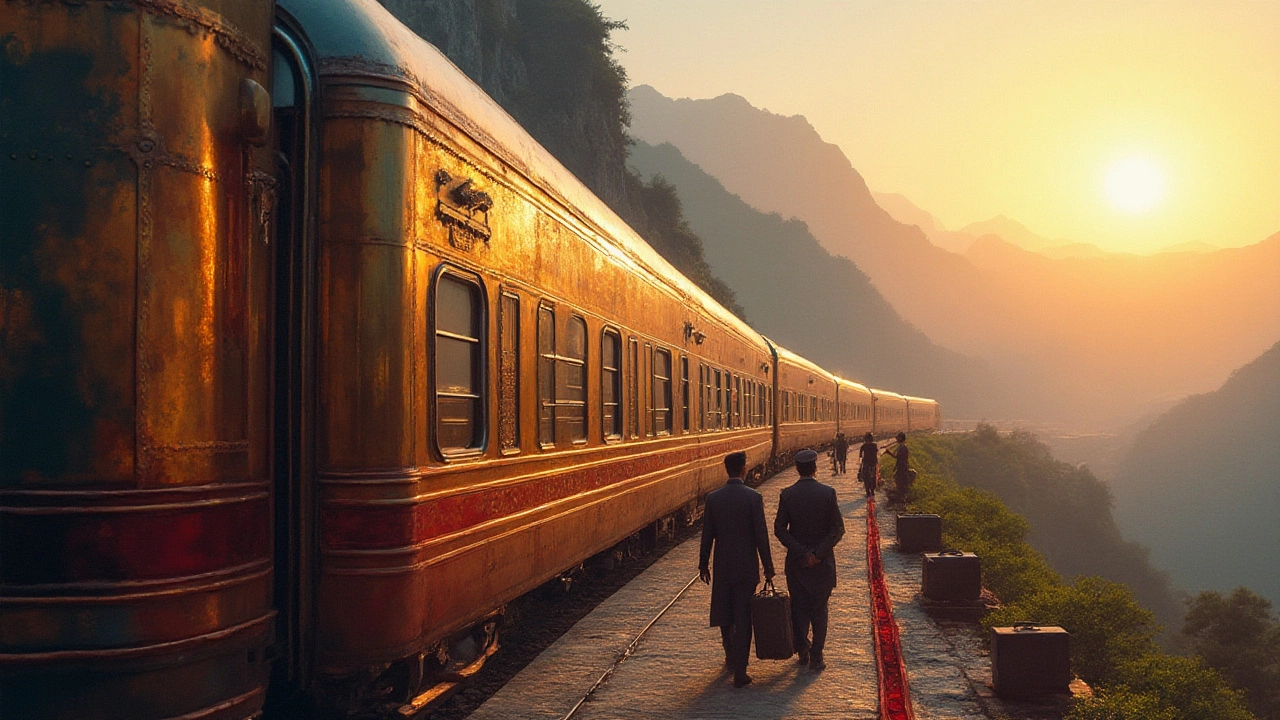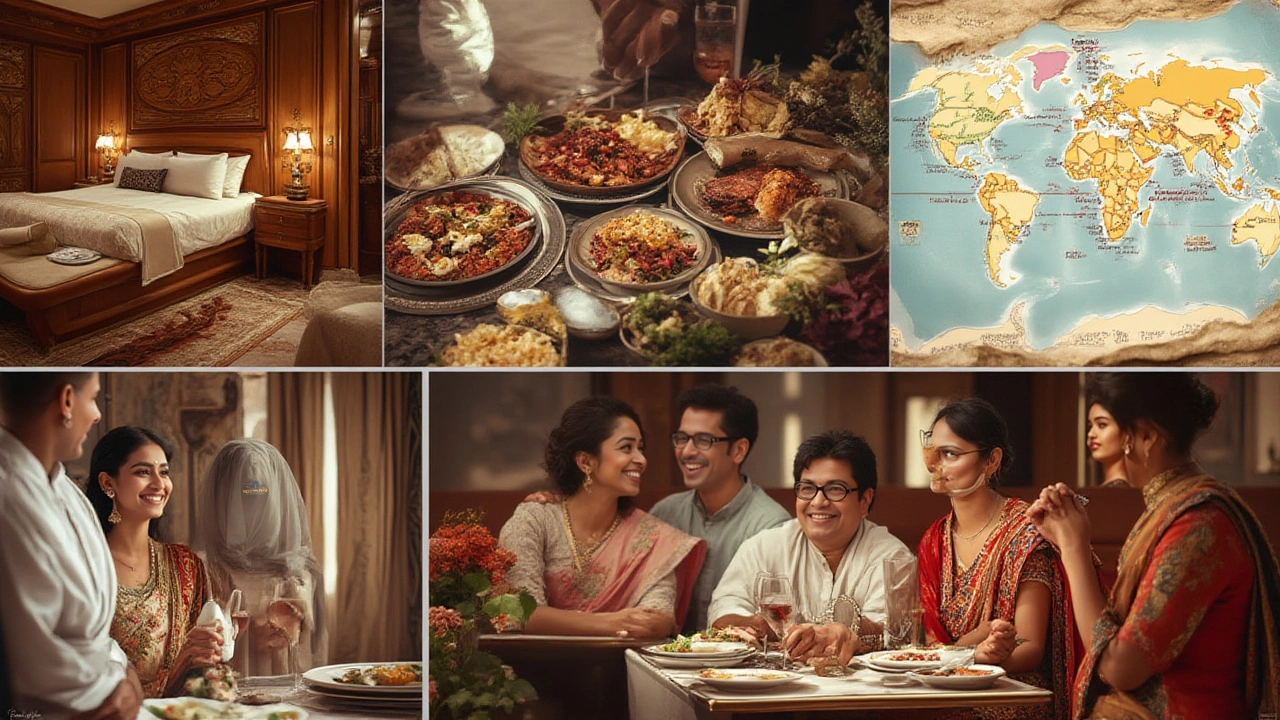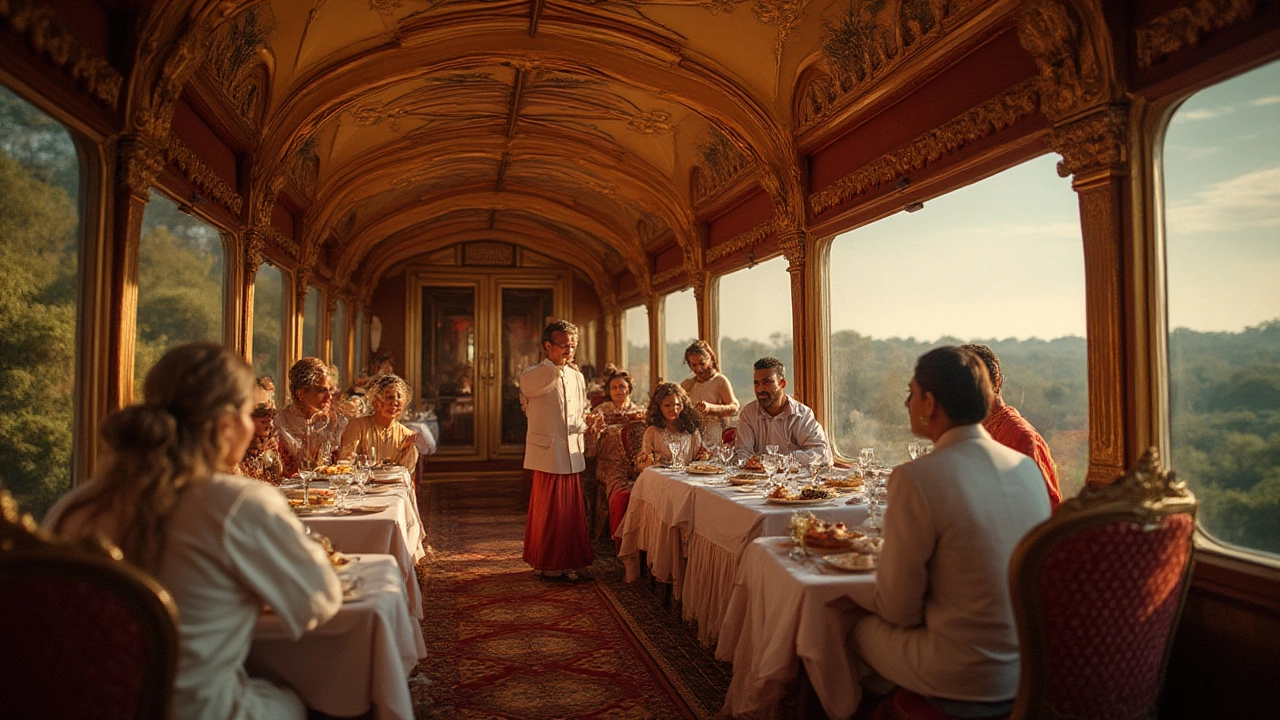If you thought first-class airline tickets were pricey, you might be in for a shock. Some people pay more for a train ticket than the average new car, all for a few days of silver service on steel rails. Even if you aren’t itching to spend your mortgage payment on a ticket, you’ll want to know: what makes these luxury train journeys so wildly expensive, and who’s actually booking these rides? My cockatoo Charlie may prefer the steady hum of a city bus, but for a certain breed of traveler, nothing beats the slow luxury of a world-famous, astronomically priced train trip.
Why Luxury Train Journeys Cost a Fortune
Luxury trains aren’t just about moving from point A to B. Picture decadent Art Deco cars with shining brass railings, suites dressed in silk and velvet, and an army of staff who somehow always seem to know your favorite cocktail. The price isn’t only for what’s inside the train—it’s for time travel, adventure, and the sense that you’re living in a storybook. In most cases, the ticket includes a private suite, meals that would impress a Michelin inspector, round-the-clock butler service, cocktails at sunset, and tailor-made excursions at every stop. A few trains even toss in personal shopping experiences or exclusive tickets to hard-to-enter landmarks along the journey.
Take for example the Venice Simplon-Orient-Express. Its artful restoration of vintage 1920s and 1930s carriages, each with a fascinating backstory, means you’re literally sitting where icons of old once reclined. The chefs could be straight from a Paris fine dining kitchen, and the bar car sees more bow ties per square meter than a Bond movie. When you book, you’re buying history, exclusivity, and a fully curated experience. Sometimes there’s a scarcity factor, too. Certain journeys run only once or twice a year and can sell out so fast you’d think Taylor Swift tickets were easier to snag.
Not to mention the logistics. Maintaining vintage rolling stock, importing ingredients from across continents, and keeping a staff of white-gloved servers and entertainers happy isn’t cheap. These rolling palaces require steady investment, high insurance, and regular touch-ups. Every grand train has a story: the Maharajas’ Express in India, with its gold mirrors and shiny marquetry, or South Africa’s Rovos Rail, where the staff polishes every brass knob until you can see your reflection. These extras aren’t for penny-pinchers, but for the traveler who wants to float above the ordinary.
The Record-Breaker: The Most Expensive Train Fare in the World
If you’re chasing bragging rights for the most expensive train ticket, look no further than Japan’s Shiki-shima Train Suite. The peak price? Around $19,000 per passenger for a four-day journey—enough to make even seasoned luxury travelers blink. That’s nearly $10,000 a night for two, and that fare can fluctuate with season and suite, sometimes hitting $22,000 for the top rooms. Hard to believe? There’s a year-long waitlist, and spots are awarded by lottery because demand so outpaces supply.
What sets the Suite Shiki-shima apart? To start with, the train itself is a marvel. Its sleek, futuristic design looks almost like something out of a sci-fi movie, but step inside and it’s a peaceful blend of Japanese minimalism, high-tech comfort, and traditional craftsmanship. There are just 34 guests per trip, so privacy isn’t an issue. The train’s glass-walled observatories give you a real feeling of floating through the beautiful Tohoku and Hokkaido landscapes. Sparkling rivers, snowy mountains, sake tastings, and onsen baths at off-train stops—all this is woven into the trip.
The fare includes epic multi-course Kaiseki meals curated by award-winning chefs, local gourmet specialties at each stop, and personalized guided tours (think: private sushi masterclasses or exclusive shrine viewings). Rooms feature beds with hand-stitched futons, private cedar-wood soaking tubs, and floor-to-ceiling windows. If you’re the sort who likes comparing value, a single ticket on Suite Shiki-shima often trumps the priciest fares on Europe’s luxury trains, which typically cap out at $7,000 to $12,000 per person for weeklong trips.

Other Notorious Contenders: Compare the World’s Costliest Train Rides
If the Shiki-shima is king, then the Venice Simplon-Orient-Express is its well-dressed cousin in Europe, charging up to $9,000 for a double cabin on the Paris to Istanbul annual journey. Lasting six days, this ride offers antique luxury, lobster banquets, and jaw-dropping mountain panoramas. The new Grand Suites add ornate private bathrooms, marble sinks, and free-flowing Champagne at triple the classic fare.
Down in South Africa, Rovos Rail’s 15-day journey between Dar es Salaam and Cape Town rings in at about $12,500 for the Royal Suite. Each suite is basically a rolling hotel room, complete with its own Victorian bathtub. India’s Maharajas’ Express brings the bling—its “Presidential Suite” for the week-long “Heritage of India” route can cost up to $23,000 for two people. Travelers get their own lounge, bedroom, bathroom, and a personal valet.
Let’s not ignore Australia’s The Ghan Expedition. The full Darwin to Adelaide journey costs up to $5,500 per person in the top Platinum class for four days. You get fine wine, Outback excursions, and the kind of service where staff will actually remember your name and your favorite coffee. For quick reference, here’s how these fares stack up in 2025:
| Train | Route | Top Fare (per person) | Duration |
|---|---|---|---|
| Train Suite Shiki-shima | Tokyo > Tohoku/Hokkaido | $19,000-$22,000 | 4 days |
| Maharajas’ Express | Delhi > Mumbai/various | $12,000-$23,000 (Presidential Suite for 2) | 4-7 days |
| Venice Simplon-Orient-Express | Paris > Istanbul | $9,000 (Grand Suite up to $19,000) | 6 days |
| Rovos Rail | Dar → Cape Town | $12,500 | 15 days |
| The Ghan Expedition | Darwin → Adelaide | $5,500 | 4 days |
What You Get for the Price: Inside the Lap of Train Luxury
For these ticket prices, you really should expect more than a reclining seat and a lukewarm sandwich. So what actually comes with the cost? Here’s what stands out. First, dining is truly next-level. No squishy tray meals here—think locally sourced seafood, artisan cheese boards, freshly baked pastries in the morning, all matched with sommelier-selected wines and cocktails on tap. The chefs will accommodate every whim, and sources say some guests have even had entire menus custom-written on request.
Your room? It’s not a cubbyhole. Top suites look more like hotel penthouses, with full-size beds, ornate woodwork, original artworks, Wi-Fi (sometimes a bit patchy in the wilds), and even heated floors. Big windows are a standard, so you won’t miss a single mountain, lake, or tiny remote village chugging by. Some trains offer bathtubs with views, and on the Maharajas’ Express and Shiki-shima, you’ll find attendants who’ll draw your bath exactly how you like it. Personalized service is the rule. Want a midnight snack? It’ll appear, silver tray and all. Left your jacket in the dining car? The staff will return it pressed, as if by magic.
What about off-train experiences? Here’s where things get wild—guests enjoy private concerts in ancient castles, champagne picnics in Trajan’s markets, or exclusive tours behind the scenes at sacred temples. Most also include transfers and private guides. On some routes, the train will even pause so guests can step out for sunrise over a salt lake, or a whisky tasting in a field.

Tips for Booking (or Dreaming About) the World’s Most Expensive Train Fare
Look, booking the most expensive train fare around isn’t exactly like buying a suburban commuter pass. There’s competition, waiting lists, and sometimes a bit of luck involved. Take Japan’s Suite Shiki-shima: you’ll need to submit a booking request as much as 8-12 months in advance, then cross your fingers that your name gets picked. For most other luxury trains, high season (usually spring and fall) can fill a year out.
Flexibility is your best friend. If you’re able to travel off-season, you might score the same luxury suite for half the price, and the crowds—if you can call 34 fellow passengers a crowd—will be thinner. Agents who specialize in luxury rail travel often get first dibs on new departures or cancelled spots, so it’s worth finding a travel pro who can call in some favors.
Analyze what’s most important to you. If privacy and food are top priorities, the Shiki-shima or the Grand Suites on the Venice Simplon-Orient-Express make sense. But if you love epic scenery and classic colonial glamour, you might prefer Rovos Rail or The Ghan. Read real reviews—people are more honest on forums than in glossy blogs. And, just for fun, compare inclusions. Some trains charge separately for premium drinks or off-train excursions; others wrap everything in. That can change the value equation fast.
And here’s a tip that even a parrot would appreciate—travel insurance is a must. Between schedule changes, illness, and the occasional missed connection, you want to protect that eye-watering fare, just in case.
For those happy to travel by YouTube: tons of creators now document every plush cushion, crystal glass, and panoramic dining car view. If you’re just here for a bit of daydreaming, grab a drink, find a virtual tour, and enjoy the luxury at zero cost—Charlie the cockatoo’s favorite kind of travel, honestly.
